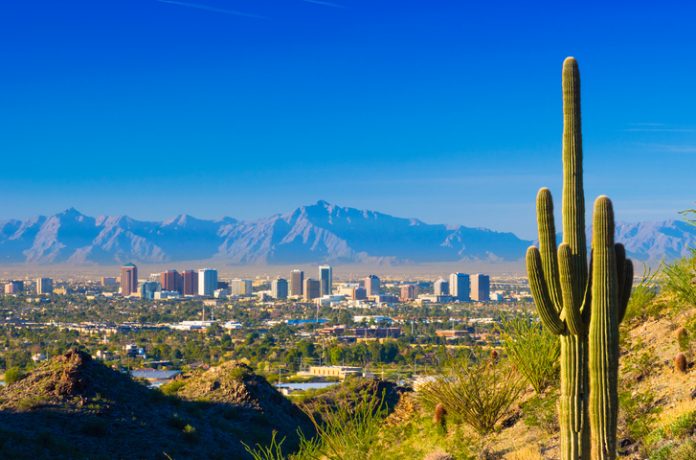
The Phoenix hotel market may be able to recover quicker than other major markets, so long as the region’s recent surge in coronavirus is kept under control, according to Kalibri Labs’ latest market spotlight on Phoenix. Kalibri Labs looked at data from 2019 and through July 10, 2020, and shared insights on Phoenix hotel performance, outlining possible recovery scenarios for the market.
In 2019, occupancy, guest-paid average daily rate (ADR), and revenue per available room (RevPAR) improved from the previous year across the market—up 2.18 percent, 1.39 percent, and 3.6 percent year-over-year, respectively. All chain scales experienced this growth except economy hotels, which saw a 0.34 percent drop in occupancy last year, according to the report.
In 2020, the COVID-19 pandemic changed the course of the market’s growth trajectory. Year-to-date through July 10, occupancy—at 45.3 percent—declined 39.2 percent compared to the same period last year. However, Phoenix has fared better than most major markets, according to Kalibri Labs. ADR dropped just 5.51 percent year-to-date compared to the same time last year, which Kalibri Labs noted may be due, in part, to the state’s lack of a complete shutdown compared to other areas of the country. Predictably, corporate and group business performance is still behind last year’s.
While lower-tier properties did not perform as well as middle and upper tiers in 2019, they have had a quicker recovery amid the pandemic, the report found. Starting in the middle of April, lower-tier hotels in Phoenix began to show improvement, which continued into July. Middle-tier hotels began to recover a month later than lower tier, and upper-tier properties experienced the steepest declines and slowest recovery, the report found. The recent rise in COVID-19 cases across Arizona in June and July following the state’s early reopening has dampened the recovery of middle- and upper-tier hotels.
In terms of recovery, Kalibri Labs suggested that the Phoenix market may be quicker to return to 2019 revenue levels compared to other markets since the downturn is happening during the city’s “slow season.”
“Our modeling suggests that the impact here will not be of the magnitude we have seen in most other major markets, again because of the seasonality of the business,” Kalibri Labs noted in its market spotlight. “Of course, the recent extreme surge of the virus in and around the Phoenix area, if not controlled, could put a significant damper on winter and early spring demand.”
The report added that an uptick in air travel will be critical to the market’s recovery—the Phoenix market is primarily driven by group and leisure travel, and guests typically fly to the destination.











